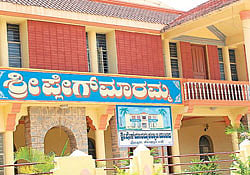
Towards the end of the 18th century and the beginning of the 19th century, plague epidemic spread across the country resulting in the death of the people in large numbers.
Plague epidemic spread in many parts of South India including many parts of Bangalore and Chikkaballapur. Hosahudya village in the taluk was one of the affected villages. Many of the residents of this village lost their loved ones.
During September 1898, Bangalore City was hit by the most disastrous epidemic called Plague. It became an epidemic and the areas worst affected were Balepet, Mamulpet, Old Tharagupet, Lalbagh, Ulsoor and Shivajinagar.
It is learnt that the death toll peaked in November 1898, resulting in a decline in the population by 25 per cent.
Over 30,000 people left the city during this period. Old Tharagupet, the chief grain market in whole of South India was deserted and the business came to stand-still. The British Officers in the cantonment area sent back their families to England.
While the government was taking all measures to combat the epidemic, elders of the localities affected by the disease which resulted in heavy death toll, thought that the spread of deadly disease was a curse of Goddess Plague Maramma and decided to build a temple dedicated to Goddess Plague Maramma to ward of the evil.
Temples were built in the name of Goddess and offerings were made.
Although plague has now being completely eradicated, the fear of this dreadful epidemic is still prevalent among the elders of this village.
According to the elders, when plague claimed one victim after another, people abandoned the village and went to far off places to escape the curse of the epidemic. They returned after about four or five months, but they still lived in fear of the dreaded disease. Compared to other villages, the incidence of plague was more here.
Those who continued to remain in the village began to revive the faith in the existing Maramma temple. The incidence of illness declined and the villagers attributed it to the deity Maramma.
The began calling the temple ‘Plague Maramma.’ A Plague Maramma Kalyana Mantap was built in 1993.
Temples have been dedicated to Goddess of small-pox in many places in the country, but Bangalore and Chikkaballapur has temples dedicated to the Goddess of plague called ‘plague Maramma or Plague amma.
The Plague Maramma temples are than a century old, still continue to perform Pooja without a break even today. The temple are periodically renovated and in some places some more deities have been added and in some cases names have been changed.
But, Hosahudya village is the only place with a temple and a kalyana mantap in the name of Plague Maramma.
